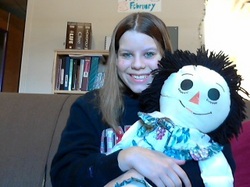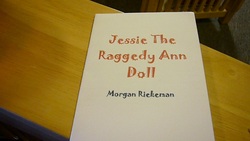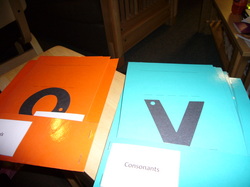We began a discussion on the importance of designing classrooms to meet the needs of our students. Who knew it was so important? Since everyone in our class is in a field experience we analyzed our classrooms, and made some changes to make them more effective for the student's needs. Mine changed quite a bit. I moved the reading center away from the door and blocked it off, so students there wouldn't be disturbed. I also moved the tables to get rid of some empty space that allowed me to add another center. I made a few other small changes, but those were my big ones.
This was an eye opener. Who knew that there were so many regulations regarding playgrounds? It makes sense though, since they do have the potential to be dangerous. We went out around the town to analyze playgrounds and return with our findings. My partner and I went to a local elementary school, and were pleased with what we found. It was well kept, and other than a few very minor changes that could be easily made we gave it a very good report. This project provided us with some great knowledge that we can then take and apply to the playgrounds our kids will play on. Who knows, we may even be able to use it to create better playgrounds in the future! This was a really unique project. In order to get us away from the overuse of Powerpoint, we created a partner presentation, but we used an online tool called Prezi. It was fun, and different, and fairly easy to use. It was definately a good way to escape the constant use of Powerpoint.
My partner and I did our presentation on Appropriate Punishment and Guiding Behavior. We learned alot about how to better create a classroom that focuses on discipline, and communication as opposed to punishment and fear. I know it will be difficult and take alot of work, but that is the sort of classroom I want to have when I enter the classroom. This was a class collaboration. We all picked a subject area- mine was science. We then scoured the internet looking for activities pretaining to moose, and the book "If You Give a Moose a Muffin." Once we all found activities that pretained to our subject area, we gathered them all together and created a booklet. Now if we get into the classroom and want to do a unit on moose, we have enough materials to get us almost completely through it covering every subject area from science to art to math.
This project was fun! We went and found a childhood toy, which brough back alot of memories for me. I found my big huge rag doll Jessie that had been my favorite when I was little. We then took our toy and using charts that told us what was developmentally appropriate we created packets that suggested activities for a certain age that encouraged social, emotianal, cognitive, and physical growth. All our activities involved our toy, and it was fun seeing the things I did when I was young that I thought was playing that was actually encouraging my growth.
I just begin using a new tool called Photo Story. It's really fun, easy to use, and a great tool for the classroom. It can be used both for small and large group activities. Basically it allows you to combine photos, words, text, music, and animation all in one easy process. So I told the story of my life, basing it on the theme of family. I had a lot of fun doing it too!!! It's a much more fun get to know you tool than just about anything else I've seen as long as you are prepared for it. I highly reccommend checking it out.
Another tool we made is black cutout letters. We used the cutouts in the lab and then hole punched where you would begin drawing that particular letter to show young children how to begin drawing letters. We laminated them and made packets for them, and they are now ready for use in the classroom! Recently I worked with a tool called ToonDoo, which allows you to create your own cartoons. This is my cartoon on the constructivist theory, of which Piaget and Vygotsky are the most well known theorists. The main idea of constructivism is that children learn, and gain meaning and understanding from interacting with their enviroment through play and experimentation, and creating schemas that they accommadate and assimilate (add to, or revise) as they gain more information.
Vygotsky adds the belief that children also need meaningful interaction with others, both peers and adults, to properly learn and construct these meanings. In the classroom this means that you need to ensure you provide a rich enviroment for students to learn in, full of developmentally appropriate materials, and lessons that allow for optimum learning. And since social interaction includes adult provide oppurtunities for students to learn from both each others experiences as well as yours. |




 RSS Feed
RSS Feed